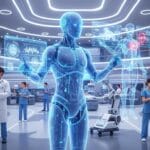Much has been written about the travails of the pharmaceutical industry. Generic competition is reducing profitability as leading blockbuster drugs like Pfizer’s Lipitor lose patent protection. Biotech generic competition is on the horizon.
Much has been written about the travails of the pharmaceutical industry. Generic competition is reducing profitability as leading blockbuster drugs like Pfizer’s Lipitor lose patent protection. Biotech generic competition is on the horizon.
The industry’s sleazier marketing techniques are in decline. Physicians are turning their backs on fancy dinners and sham consulting contracts, and not just because the companies were forced to fork over billions of dollars to settle government anti-kickback suits. Starting in 2013, patients of every physician who takes money from a drug or medical device company will be able to find that fact and the amount in a publicly available internet database, courtesy of the Affordable Care Act, a.k.a. Obamacare.
Meanwhile, the udders on the cash cows that for decades made the industry the most profitable in America are running dry. The insurers who manage Medicare and Medicaid’s drug plans are watching every penny. They are forcing generic substitution wherever possible and will soon have a growing body of comparative effectiveness research to fend off charges they are rationing drugs when they turn down payment for expensive new products that are no better than the ones that are already on the market.
Over in the firms’ R&D departments, the pipeline for blockbuster products – defined as drugs that generate over a billion dollars a year – is running dry. To justify their huge research infrastructures, companies are now charging $100,000 a year and more for new drugs, which often deliver only a marginal improvement in health, especially in cancer treatments. Industry officials publicly fret about where they are going to find revenue to develop the next generation of cures.
Last week’s news from the frontiers of medical science highlighted the problems facing an industry tripping over its existing business model, which funds R&D by getting more and more people to use its older yet still on-patent drugs.
On Thursday a Food and Drug Administration advisory committee gave its blessing to a Gilead Science pill that can prevent AIDS transmission. Truvada, a combination of two drugs used to treat people with AIDS, reduces transmission by 63 percent if taken routinely by an uninfected partner. If the FDA agrees with the committee, and it usually does, it will be the first time the agency has approved a drug that prevents person-to-person transmission of the human immunodeficiency virus that causes AIDS.
At first blush, it might appear that there’s a large market for such a pill. There are an estimated one million people in the U.S. living with HIV/AIDS. There are about 50,000 new infections each year. Since unprotected sex between an infected and uninfected partner remains the largest single cause of transmission, it might seem like there is a large market for the $11,000-a-year drug.
But as Scott Hensley at NPR’s Shots blog pointed out, doctors are not rushing to prescribe the pill for partners of their infected patients fearing they won’t stick to the daily regimen yet avoid other forms of protection (condom use). There are also nasty side effects with the drugs as there are with all AIDS medications. Gilead CEO John Martin told reporters in January he didn’t see a significant commercial opportunity from the new designation.
On Friday, the New York Times reported a new study of patients on dialysis that showed that the government’s bundled payment scheme to reduce use of an expensive anti-anemia drug – Amgen’s Epogen – had led to a small increase in blood transfusions. Dialysis clinics have dialed back their use of the drug to save money. The number of monthly transfusions grew 9 to 22 percent last year to about 10,000 a month (up from about 8,250) among the nation’s 400,000 dialysis patients.
But many renal physicians will find that an acceptable trade-off, since overuse of the drug leads to increased heart attacks and strokes among the vulnerable population on dialysis. “It might be seen as an acceptable trade-off to exchange a higher risk of cardiovascular attack for a higher risk of transfusion,” the paper noted.
In a third example where less equals more, Food and Drug Administration scientists reported in last week’s New England Journal of Medicine that widely-used bisphosphonates for preventing bone deterioration in post-menopausal women did not help women after about three years on the drugs and should probably only be used on women who are at serious risk of fractures. The drugs, which on rare occasions trigger spontaneous bone breaks and necrosis of the jaw, are often prescribed to women whose only bone problems show up on bone-density scans.
What do all these situations have in common? Companies that developed useful therapies for particular conditions went looking for ways to get their products used by much wider populations in order to generate higher profits and money to invest in R&D. But since the benefits to those larger, less sick populations were far smaller than what had been seen in the original group for which the drugs were intended, the risks eventually outweighed the benefits.
That’s not an effective way for an industry – or a nation – to fund medical research. Industry scientists need to focus on unsolved problems like dementia or cancer, not on research that seeks to justify peddling pills to people who don’t really need them.






